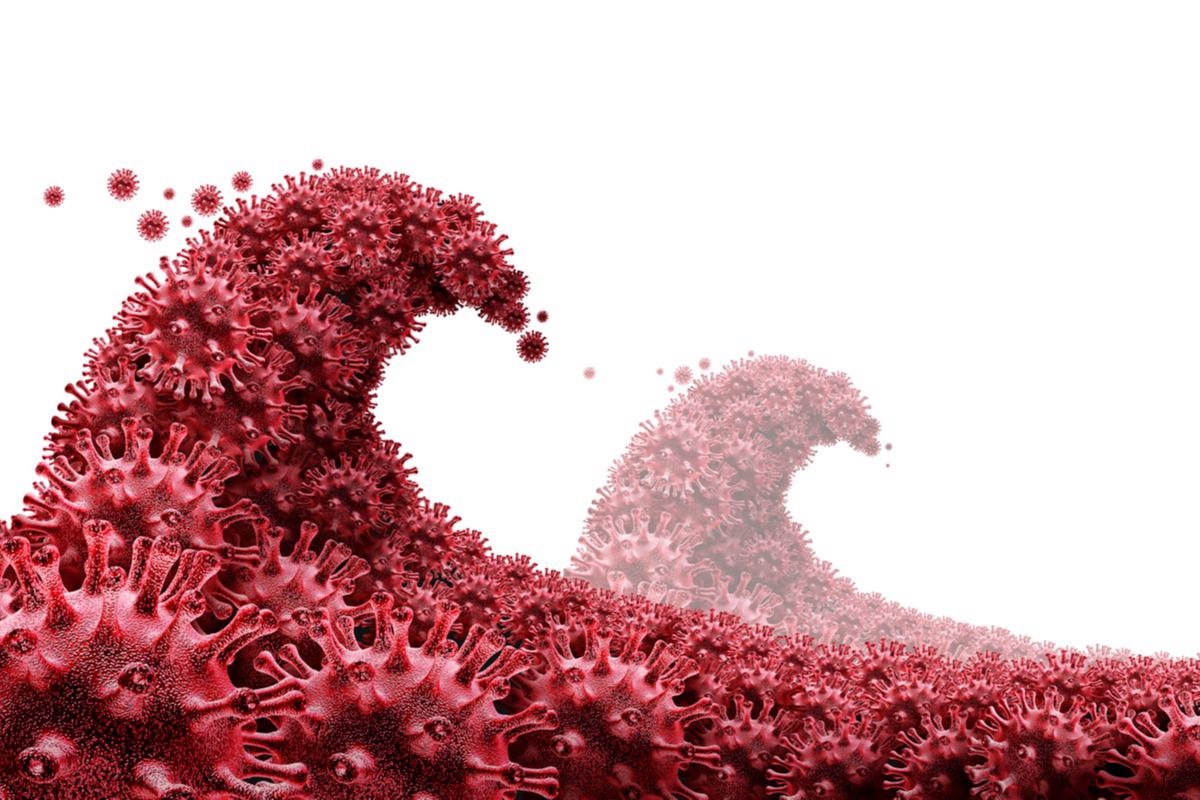A recent study posted to the medRxiv* preprint server compared the different waves of severe acute respiratory syndrome coronavirus 2 (SARS-CoV-2) infection in the US.
 Study: Comparing Waves of COVID-19 in the US: Scale of response changes over time. Image Credit: Lightspring/Shutterstock
Study: Comparing Waves of COVID-19 in the US: Scale of response changes over time. Image Credit: Lightspring/Shutterstock

 *Important notice: medRxiv publishes preliminary scientific reports that are not peer-reviewed and, therefore, should not be regarded as conclusive, guide clinical practice/health-related behavior, or treated as established information.
*Important notice: medRxiv publishes preliminary scientific reports that are not peer-reviewed and, therefore, should not be regarded as conclusive, guide clinical practice/health-related behavior, or treated as established information.
Background
Determining the underlying factors contributing to a positive or negative response to pandemic waves has been challenging, mainly due to the inconsistent implementation of non-pharmaceutical interventions (NPIs). However, identifying these factors is essential for devising targeted public health measures.
About the study
The present study assessed the relationship between consecutive coronavirus disease 2019 (COVID-19) waves to assess the relative pandemic response of a county in the US.
Data for SARS-CoV-2 cases in US counties were obtained from the Center for Systems Science and Engineering at Johns Hopkins University. The study focused on three initial waves of COVID-19 infection. The first wave, lasting from January 2020 to May 2020, was characterized by the first known detection of SARS-CoV-2 in the US counties and the introduction of NPIs. The second wave spanned from July 2020 to September 2020 and represented the initial major resurgence of COVID-19 infection across the US due to reduced abatement of the NPIs. The third wave was observed from September 2020 to January 2021 and represented the final surge of infections before the COVID-19 vaccines were made available.
An algorithm modified for accurate peak detection was used to identify peaks of the epidemic curves in each county across the three COVID-19 waves. The algorithm identified the largest positive “peak” in each wave period as the apex of the curve for that particular epidemic curve. Also, the algorithm determined the last “negative” peak found before the apex of the curve as the point of the preceding valley. Moreover, the algorithm noted the beginning of the subsequent wave as the first positive “peak” detected between the last “negative” peak and the largest positive “peak.”
Results
The study results showed that the highest peaks of the infection waves were observed in different counties of the US in different waves, depending on the dynamics of the COVID-19 pandemic. Northeastern US had more severe initial waves of infections but smaller subsequent waves compared to the rest of the counties. The southeastern part of the US witnessed spatial pockets of large waves in the first wave, larger waves in the second, and smaller waves in the third.
Spatiotemporal patterns between subsequent waves were observed across different counties. Southern and midwestern parts of the US had a strong positive correlation between the first and the second waves, while the midwestern region had a high correlation between the second and the third waves. Also, the southeast areas had a negative relationship between the second and the third wave. It was noted that while the southeastern and the plains regions had more lax NPI policies, these two regions responded in contrasting ways to subsequent COVID-19 waves.
Spatial correlation analyses showed that the standardized difference between the slopes of the first and second waves and the second and third waves had strongly positive correlations across short distances, moving to a weak negative correlation at median distances. However, the first and the second wave had positive correlations over short distances, shifting to positive correlations across long distances. The extent of these shifted to negative correlations over the shortest distance in the northeastern US and to positive correlations over the longest distance in the western US.
Demographically similar counties had negative relationships between the first and second waves, indicating that the pandemic response of these counties substantially improved with subsequent waves of infection. Counties with the most negative relationships for the first and second waves represented the counties with the highest population densities in urban areas.
Conclusion
The study findings found strong similarities in responses to different waves of COVID-19 infection at regional and local levels. Moreover, the predictors of pandemic responses across different distances shifted from demographics on a county level to that on the state level.
The researchers predicted that the importance of state-level factors should improve over time as the uniform policies undertaken against COVID-19 in the initial waves are generally broken down into state-wise NPI regulations. Similarly, an increase in the influence of county-level factors can be predicted as many states relied more on individual hygiene behaviors and county-level policies. Identifying such factors will better protect areas at higher risk of extreme epidemic impact and improve the overall pandemic response.

 *Important notice: medRxiv publishes preliminary scientific reports that are not peer-reviewed and, therefore, should not be regarded as conclusive, guide clinical practice/health-related behavior, or treated as established information.
*Important notice: medRxiv publishes preliminary scientific reports that are not peer-reviewed and, therefore, should not be regarded as conclusive, guide clinical practice/health-related behavior, or treated as established information.